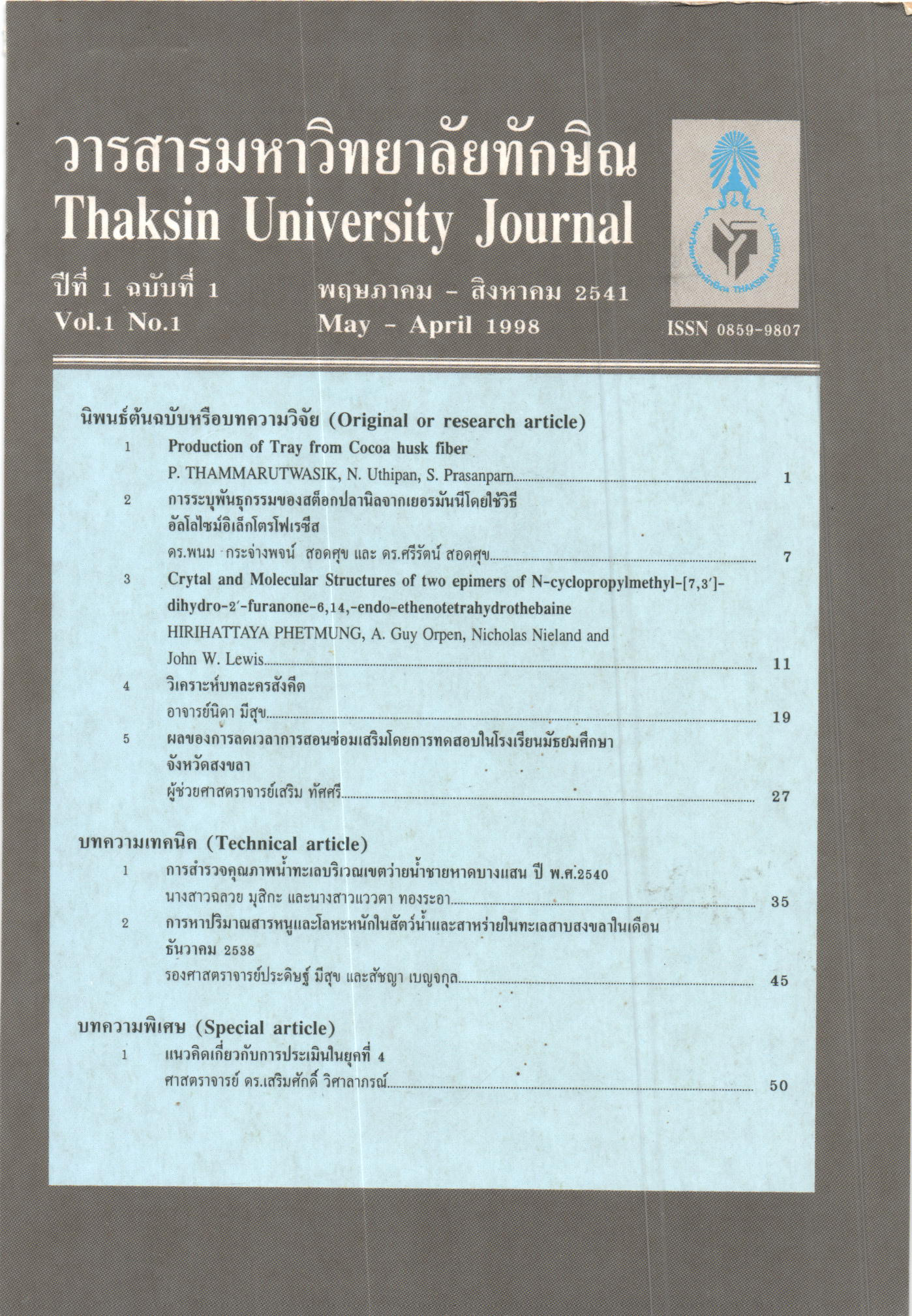Production of Tray from Cocoa husk fiber
Main Article Content
Abstract
Cocoa husk is comprised of B2.17qo water (on wet basis), fiber, lignin, cellulose and hemicellulose, was 26.12, 11.74,23,t3 at\d 6.40 (d.w.b.) respectively. The condition most suitable ro separate the shell from the cocoa husk was found to be soaking lhe fresh husk in 30% sodium hydroxide solution at room tcmpcrature for about 6-z h. The husk was rhen placed in 20% sodiun hy&oxide solulion at 121'C wilh a pressure of tb psi. for 30 min. After this step, the fiber was brown and comprised of 62.r9"k cellulose and2?.os% lignin (d.w.b). The next step was 10 bleach this fiber with lb% hydrogen peroxide solution at 7a C for 2 hr. The result was thar the fiber tumed white-yellow. The blcached fiber color in rerms of L, a and b was 25.427, -3.320 and 17.707 respecti!el). The waler holdrng capacil) was 2.08 g water per g fiber, The fiber then was mixed with tapioca starch, modified tapioca starch, water and binders such as carboxymethylcellulose, hydroxypropylmethylcellulose and microcrystallinecellulose. The mixiure was pressed in a mould which was heated up to rzo'C at a pressuro of 8,000 psi. for 5 min and 0 psi. for lb min. The physical propenies of the lrays, nam€ly, b€nding strengrh, compression strength and water absorption, delermin€d that trays from a mixture of fiber, modified tapioca slarch, waler and 10/o carboxymethylcellulose were the strongest and most suitable for use as packagiog. Pieces of sliced guava werc packed in a tray, wrapped with plastic tilm and stored at 8-1dC lbr 10 days. Ir was found thal rhc guava was lighter, had drier skin and browning had occured because of a Ioss of rvater ftom transpiration and absorption by the lray. The lray was heavier, had softened and had lost shape, due to its absorption of water from the fruit.


